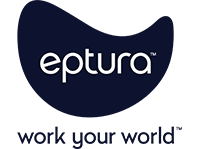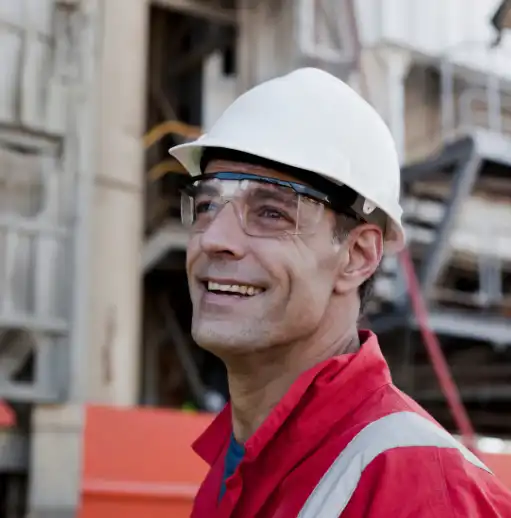In episode 155 of the Asset Champion podcast, host Mike Petrusky speaks with Norelle Done, director of marketing at Viking Pure Solutions, where she’s on a mission to improve the way we think about health, safety, and sustainability in the spaces we live, learn, and work. They start off with a discussion about the importance of addressing invisible threats in facilities, such as airborne viruses and chemical residues, and how nontoxic cleaners and disinfectants can help to reduce risks. They then explore some key challenges facing facility managers today, including staffing shortages, cleaning compliance, and shifting from reactive to preventive approaches. Done explains how sensor-based monitoring for air quality, safety, and building occupancy can significantly enhance resource efficiency and support organizational goals and shares the benefits of connecting integrated worktech platforms with environmental cleaning and maintenance data.
Agenda
- Ongoing challenges for facility managers, including staff shortages
- Innovative technologies and strategies for health and safety
- Personal insights and recommendations for FM and asset management leaders
What you need to know: Facility and maintenance takeaways
Takeaway 1: Facility managers face significant challenges, including staffing shortages and the need to balance health, safety, and sustainability, but innovative technologies can help mitigate these issues
“The challenges that I think FMs in most industries are facing are staffing shortages, and with that, the stretch and strain on janitorial and maintenance teams, they’re stretched thin,” says Done.
Compliance and transparency also pose significant hurdles, with FMs expected to meet sustainability goals and document their performance. “…they are hearing from the board that ESG is a high priority, and they are also expected to reduce risk and document their performance, and often they are doing all of that with very limited resources.”
To address these challenges, she suggests technologies like on-site generation systems for electrolyzed water, which produce non-toxic cleaning and disinfecting solutions to reduce chemical use, plastic waste, and delivery logistics, leading to cost savings and improved safety.
“In general, these on-site generation systems are reducing chemical use, they are reducing plastic waste, and you are also not having to deal with recycling single-use plastics after the fact,” she says.
Takeaway 2: The shift from reactive to preventive approaches in facility management is crucial for maintaining the health and safety of occupants
“Another challenge is dealing with maintenance versus prevention. So, organizations are struggling to shift from reactive to preventative approaches again with those limited resources, and I think those preventative approaches are especially important when it comes to surface disinfection in some industries, as well as indoor air quality in large part and infection control, especially following the pandemic,” Done notes.
Sensors can also play an important role. “Sensor-based monitoring, especially for air quality, also for cleaning compliance and building occupancy… So, you see things like lights that automatically turn off when no one is there. And all these sensor-based monitoring tools that are out there and being developed now are allowing for smarter and more targeted use of resources,” Done explains.
Takeaway 3: Innovation in facility management should be embraced, but with a critical eye towards transparency and third-party validation to avoid greenwashing
“Be open to innovation, but as you are doing so insist on transparency and third-party validation to cut through the noise. Green and sustainability and eco-friendliness and stuff are all priorities for us, but there’s a lot of marketing out there, um, coming from the director of marketing, but, um, in general, greenwashing is a very real thing and just because it sounds like it’s healthy or green doesn’t necessarily mean that it is,” Doan emphasizes.
Her specific, actionable advice: “Choose technologies that are simple, scalable, and align with your health and sustainability goals. Looking back at those limited resources again, let’s make sure that what we are using is the best fit for more needs than one if possible.”
The industry needs to embrace the idea of asking questions. “Question legacy systems or at least be open to the possibility that something new is potentially better. Just because we’ve always done it this way, comment is prevalent doesn’t mean it’s the best for your team or for your tenants,” she says.
Maintenance management insights
- Chemical overload from traditional cleaning products can lead to poor indoor air quality, staff health issues, and increased absenteeism or presenteeism.
- On-site generation systems for electrolyzed water reduce chemical use, plastic waste, and delivery logistics, providing cost savings and stronger safety and sustainability.
- Facility managers are increasingly expected to meet sustainability goals and reduce risk, often with limited resources, which necessitates the adoption of simple, fast, and safe technologies.
- Sensor-based monitoring for air quality, cleaning compliance, and building occupancy can maximize the impact of limited resources and improve the health and safety of building occupants.
- FM and asset management leaders should be open to innovation but insist on third-party validation to avoid greenwashing.
Take the Eptura™ Podcast Survey for your chance to win swag and then do a deep dive into more asset management insights by exploring all Asset Champion Podcast episodes.









